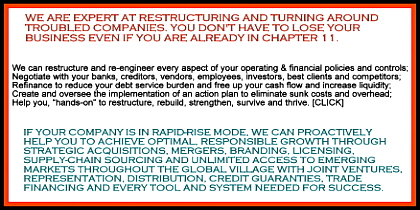Recently I witnessed a leader lash out at his staff in an outburst of frustration and anger. Needless to say, this did not have a positive effect on his team’s motivation and productivity. The business world is going through tough economic times. As pressure increases for leaders to navigate through on-going complexity, volatility and risk so does their level of anxiety. Leaders are unaware of how their mood and its resultant behaviors create a toxic environment that ultimately affects performance.
What is needed now more than ever are leaders who are self-aware and good at self-management – the ability to regulate their emotions. We need leaders who do not impulsively act on their disruptive feelings and emotions but who finds ways to channel bad moods and direct them in more constructive ways. Effective leaders choose their words carefully, avoid hasty judgments and step back to consider mitigating factors and ramifications. It is human nature to be in a bad mood. We all have those moments. However, emotionally intelligent leaders don’t let bad moods control them. They control their bad moods.
Why does self-management matter so much for leaders? People who are in touch with and can control their emotions create a climate of trust. Employees who work for such a person realize that they work for someone they can count on and whose behavior is consistent. This has a cascading effect to all employees. Calmness at the top means calmness at all levels leading to lower anxiety and higher productivity.
Needless to say, controlling disruptive impulses is essential to one’s ability to effectively lead others. So, how do leaders stay calm, think clearly and not be overwhelmed by anxiety? They do so by being aware of what triggers their emotions. One way to do this is by keeping a journal. This helps us to monitor our emotional upsets so we can prepare for them and not be caught unaware. I always recommend to clients that they spend a minimum of 15 minutes a day writing down their deepest feelings and emotions and understanding the consequences of acting on them. In other words, recall a situation when you lost control and then ask yourself: What or who was the trigger? What was the outcome? What could I do differently in the future?
LOCATE ANY PERSON, ANYWHERE - EXPERTLY AND QUICKLY
START YOUR SEARCH BY CLICKING ON THE BUTTON BELOW --
Another way is by receiving feedback from superiors, colleagues and direct reports. I had a client who received feedback from her staff that she was always in a bad mood on Monday mornings so they avoided her at that time. She literally bit their heads off if they came anywhere near her. She was unaware of her disruptive behavior until she received the feedback. The trigger for her was the end of the weekend. The outcome was alienating her staff and by being aware and modifying her behavior - do differently - she became more approachable. Ultimately, the more aware you are, the more in control you are.
Keeping a journal and receiving and acting on feedback work but requires reflective time built into each day. This isn’t always doable when you work 24/7. Companies are doing more with less and expecting their employees to continue to produce high quality results. Without building reflective time into your day you are at risk of not being in control of your own state of mind. A leader’s ability to regulate their moods is contagious and goes a long way to improving performance. If you can’t manage your emotions, it is likely that you can’t effectively manage for business results.
This is second in a series of articles on Emotional Intelligence. Stay tuned for next month’s article on Leadership and Motivation.
For more information contact me at Joyce@GrilloLeadership.com or visit my Web site www.GrilloLeadership.com.
####
Posted to THE NATIONAL NETWORKER. All rights reserved.
####
To subscribe for your free TNNW Newsletter, go to www.TheNationalNetworker.com. For the complete National Networker Relationship Capital Toolkit and a free continuous RSS feed (available either by traditional RSS or by direct email), go to: http://thenationalnetworkerweblog.blogspot.com.
You are also invited to click our buttons:
-------
Forward/Share This Article With Colleagues And Social Media:








